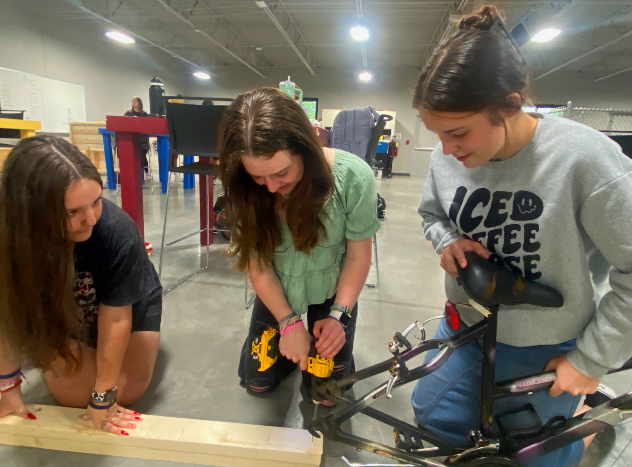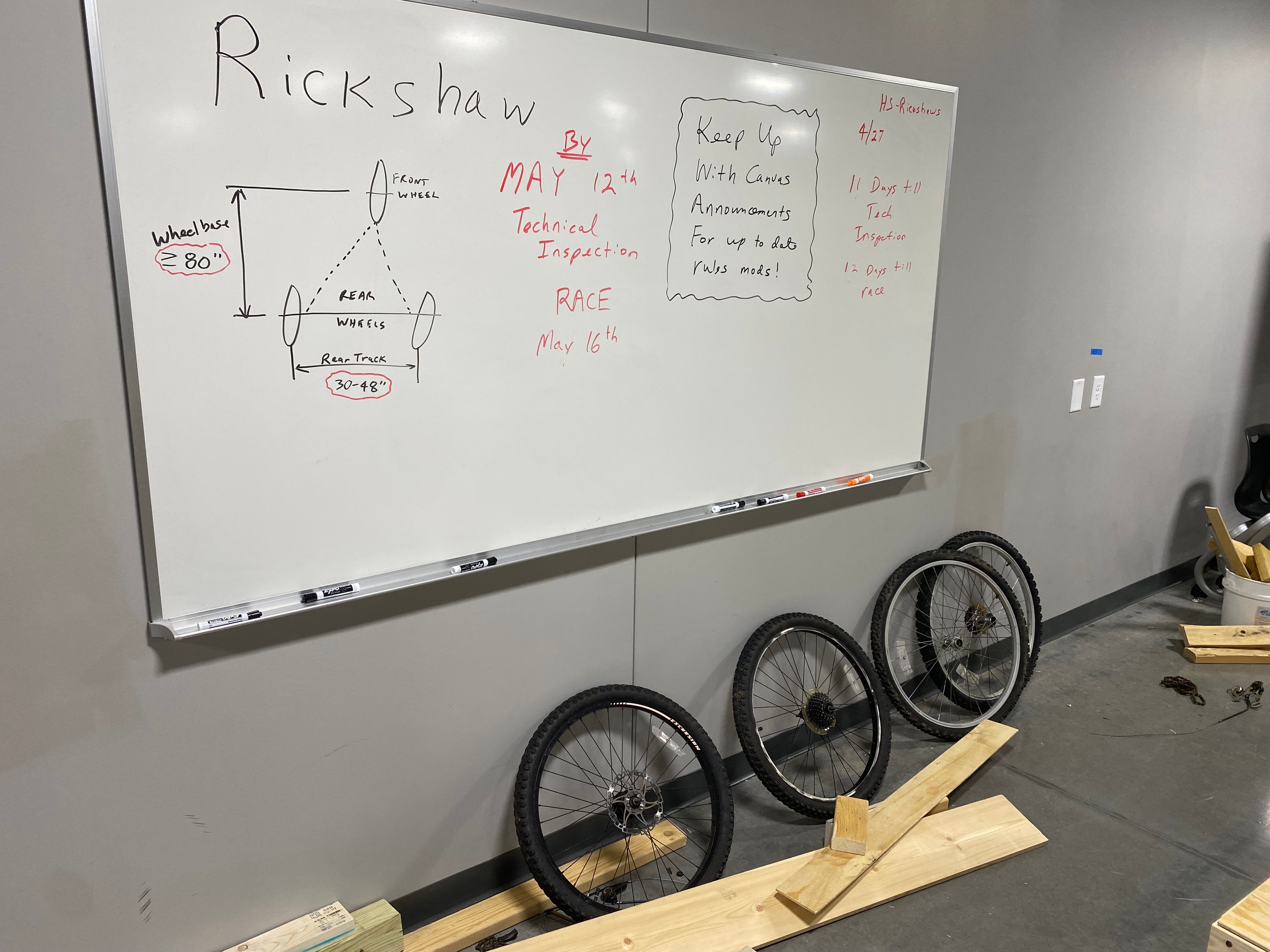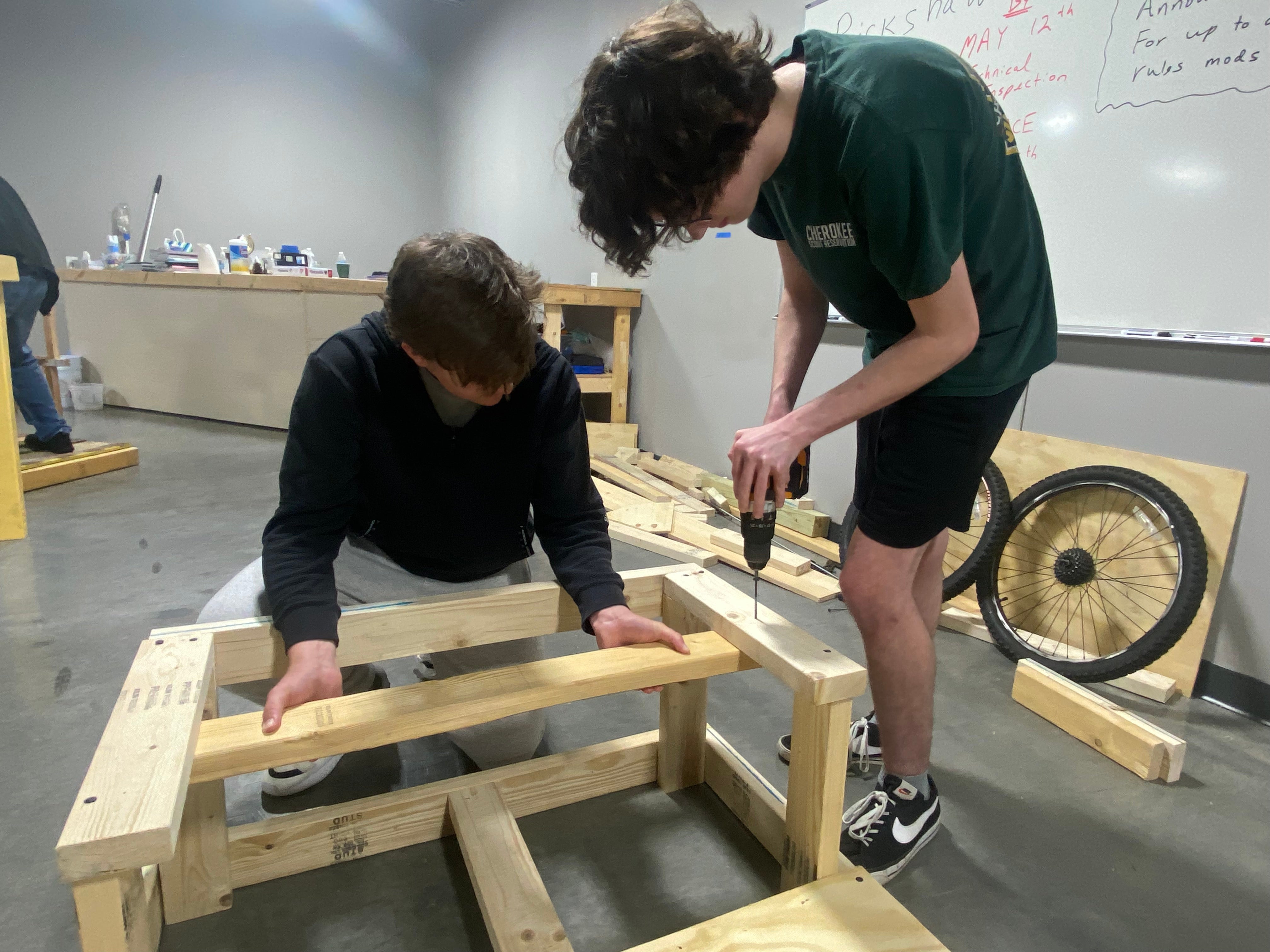Gray Stone students overcome challenges to create bicycled-powered rickshaws
Published 10:30 am Monday, May 1, 2023

- Gray Stone STEM students Jacelle Leonard, Lynley Pittman and Catherine Thornburg work together to build their rickshaw in Jeff Brown's class.
|
Getting your Trinity Audio player ready...
|
Gray Stone Day School students in Jeff Brown’s STEM classes have designed many vehicles over the years, including derby-like gravity cars, cardboard canoes and Roman chariots.
But this year, students in his four classes are building bicycled-powered rickshaws. The students are constructing each vehicle to accommodate two passengers and a driver. It is “by far the most complicated project” his students have completed, he said.
They have to design and build everything from scratch. The only pre-made objects they can use are old bicycles and wheels.
“Initially, it’s always like, ‘Oh, my gosh, we’re dead,’ ” Brown said, discussing the enormity of the project when it was first presented to his classes. But as students manage the project in stages the task becomes more manageable.

Students in Jeff Brown’s STEM classes have spent the last several weeks designing and building bicycled-powered rickshaws.
In Brown’s classroom, known as the Innovation Lab, in the middle school building, students have been working on the project nonstop since early February. They have access to tools such as 3D printers and laser cutting machines.
The project culminates on May 16, when the 16 three-person teams compete in a single-elimination tournament, comprising several one-on-one races across the perimeter of the middle school building.
Brown wants his students to gain a better appreciation for engineering and design skills while learning to work together as a team and foster strong interpersonal relationships.
“This is a complex project,” he said. “It really requires them to be excellent team members. It really puts a premium on good teamwork, in order to have a good, working design.”
He also has enjoyed watching his students problem-solve their way past the challenges that arise as they build their vehicles.
In Brown’s classes, failure is never fatal. It is expected and is often the springboard that causes students to pause, reevaluate and think differently about overcoming problems. Much of the learning is done by trial and error.
“There are a lot of life skills going on here, which is fun to watch,” he said.
Though Brown is their adviser, the students are responsible for all aspects of the projects and overcoming any problems that might arise.
“We’re all just kind of working around each other and we have to find a synergy to make everything match,” sophomore Ellison McDow said.
McDow’s team partner Chase Foreman said the best part about the project has been getting to work with several tools, noting it was the first time he had used one of the lab’s saws.

Gray Stone students Ellison McDow and Chase Foreman building their rickshaw.
Sophomores Catherine Thornburg, Jacelle Leonard and Lynley Pittman have had to overcome obstacles while designing and building their rickshaw, but they have enjoyed the process.
“Every step so far we’ve kind of struggled to make sense of it, but we’re getting there,” Thornburg said. “It’s made it more interesting and especially if you have a good team, it makes it more fun.”
Brown opens his STEM classes to all kinds of students, even those who might not be as mechanically inclined. Students who are more artistic, for example, can offer unique perspectives and new ways of thinking.
“That visualization-type of thing, that’s very valuable in engineering,” he said.
Now in his sixth year as an instructor at Gray Stone, Brown appreciates when his students decide they want to pursue a career in a STEM field such as engineering.
“That’s like the cat’s meow, that’s amazing,” he said. “To see young people that didn’t even know that they had a talent or knack for that, start as an eighth grader where they don’t know anything (about engineering) … and then all of a sudden they’re like really in the groove of engineering, it’s just super cool.”
But no matter what careers his students pursue, learning to work with their hands and build things will always come in handy.
“I have kids who come back, even though they are philosophy majors, and they go, ‘You know, I’ve got my first apartment. I can put furniture together, I can hang curtain rods, I can fix stuff, I know how to use tools,” he said. “It’s cool. Even though engineering wasn’t for them, it’s good stuff.”



